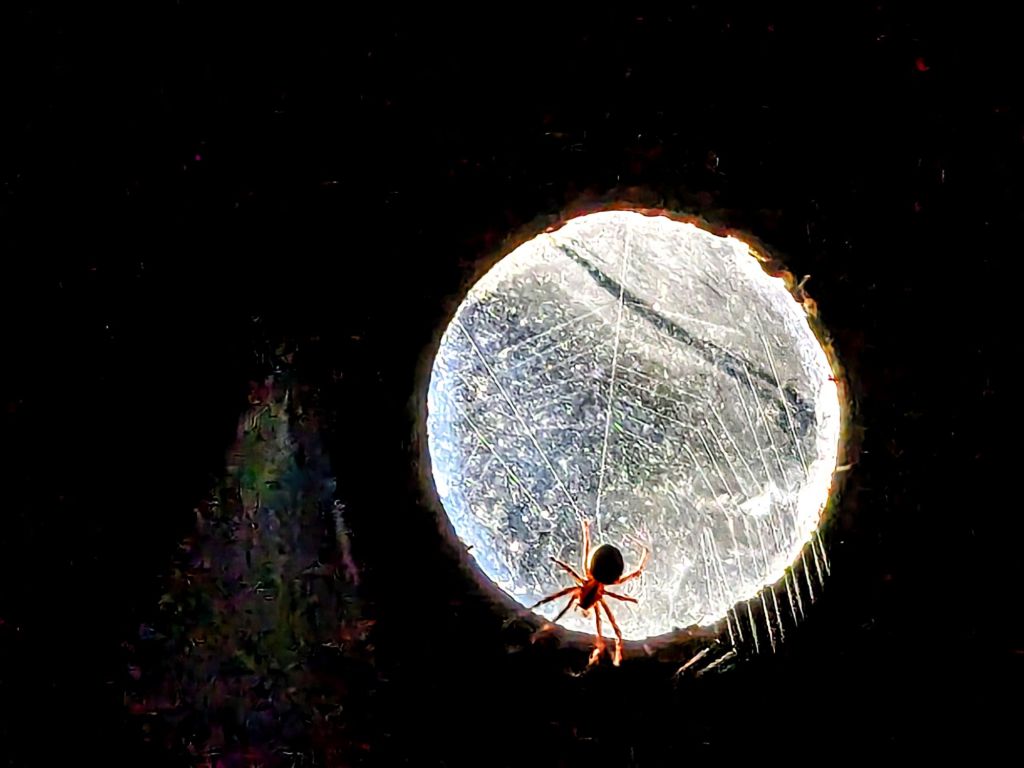
Early morning daisies doing their very best to shout out for Spring. These daisies may not have got their moment in the sun ( blog) if it were not for a lovely colour and shape coincidence.
I know very little about spiders but I imagine they have had a tough Winter/Spring as rain has constantly run into their spidery hidey holes. Just hours after the daisy picture I caught an orange, or maybe tan spider having a bask in a tiny porthole window.

This picture also looks, at first glance like a tennis ball, bringing an unusual and high flying spectator to a game.
I am not a natural arachnophobe in my normal day to day life,but neither would I feel hugely comfortable if this chap suddenly swung down on a silken thread and brushed my face?
Is there a scale of arachnophobia and we all sit somewhere on it ? With spider lovers actively taking positive steps to overcome a fear that is hard-wired into humans.
I had a nasty bite once, on my ankle. Dulwich Park, not anywhere risky. The spider was not nasty because I am not a fly, but the bite became a bit gooey and sore. The local pharmacist said he had seen a few such bites that week. All well and good in 21st Century London with antibiotic creams but would it have been a much bigger problem centuries ago?
I’m just not certain I fully understand why arachnophobia is such a common/popular fear when actual serious harm to humans is rare in most countries.
Dr Google helps out a bit but also muddies the waters by throwing in religion.
An evolutionary response: Research suggests that arachnophobia or a general aversion to spiders is hard-wired as an ancestral survival technique.
Cultural and/or religious beliefs: Some individuals within certain cultural or religious groups seem to have phobias that stem from these influences. These particular phobias differ from phobias that are common in the general population, making culture and religion potential factors in phobia development.
Genetic or family influences: Researchers believe that there may be a genetic component linked to phobias. Family environmental factors may also influence the development of phobias. For example, if a parent has a specific phobia to something, a child may pick up on that fear and develop a phobic response to it.
Spiders in religion is going to have to be a whole other ponder. The early morning coffee and my spider pondering is done for the day.



I do have a bit of a fear of them, and glad it is built into our nature, but I also love the beauty of the artistry of their webs. outside )
LikeLike
It turns out that mediaeval monks demonised the spider in the Christian world. Unreliable witnesses I would say. Better a survival instinct
LikeLiked by 1 person
ah-
LikeLike